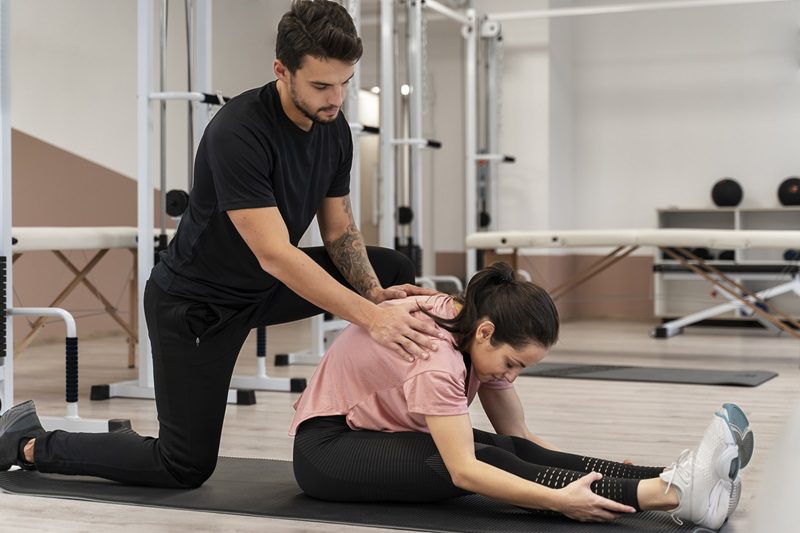Ugh, the dreaded sports injury. One minute you’re feeling like a total gym boss, the next you’re sidelined with a throbbing pain that makes even the thought of walking a chore. Fear not, fellow athletes! Sitting on the bench nursing an injury doesn’t have to be your reality. Sports rehabilitation techniques can get you back in the game faster and feeling stronger than ever.
Why Sports Rehabilitation Techniques Matter
Think of sports rehabilitation techniques as your body’s cheat codes for recovery. These techniques go beyond just resting and hoping for the best. They actively promote healing, reduce pain, and restore mobility and function, all with the goal of getting you back to your peak performance as quickly and safely as possible.
Here’s the lowdown on some of the most effective sports rehabilitation techniques:
RICE is Nice (But Not Enough): We all know the classic RICE protocol (Rest, Ice, Compression, Elevation) for immediate injury management. While RICE is still a good starting point, it’s not the whole story. For faster recovery, a more comprehensive approach is needed.
The Magic of Movement: Rest is crucial, but complete immobilization can actually hinder healing. Sports rehabilitation techniques often incorporate gentle, controlled movements specific to your injury. These exercises help maintain mobility, improve blood flow to the injured area, and promote tissue healing.
Strength Training: Your Secret Weapon: It might seem counterintuitive to train while injured, but strengthening exercises can be a game-changer. Sports rehabilitation techniques often focus on strengthening the muscles surrounding the injured area. This added support helps stabilize the joint, reduces pain, and prevents re-injury once you return to your sport.
Manual Therapy Gets Hands-On: Techniques like massage therapy and physical therapy can be powerful tools in your recovery arsenal. These therapies can improve flexibility, reduce muscle tension, and promote tissue healing, all of which contribute to a faster recovery.
Scar Tissue TLC: Scar tissue formation is a natural part of the healing process, but it can sometimes lead to stiffness and tightness. Sports rehabilitation techniques like scar tissue massage and mobilization can help break down scar tissue, improve flexibility, and restore normal range of motion.
Modalities on the Move: Therapeutic modalities like ultrasound, electrical stimulation, and laser therapy can be used to manage pain, reduce inflammation, and promote tissue healing. These techniques are often used in conjunction with other sports rehabilitation techniques for a well-rounded recovery plan.
Finding the Right Rehab for You
With so many sports rehabilitation techniques available, it’s important to find the right approach for your specific injury. Here are some tips:
Consult a Sports Medicine Pro: Don’t try to be a self-proclaimed rehab guru. A qualified sports medicine professional, like a doctor or physical therapist, can assess your injury, create a personalized rehabilitation plan, and guide you through the recovery process.
Listen to Your Body: Recovery is a journey, not a destination. Listen to your body’s cues and adjust your rehabilitation program as needed. Don’t push yourself too hard, too fast, or you risk re-injury and a longer road to recovery.
Patience is Key: Getting back to peak performance takes time. Patience is key! You might not see lightning-fast results, but with consistent effort, you’ll get there. Stick with your rehabilitation program, celebrate your milestones, and trust the process.
Bonus Tip: Fuel Your Recovery
Remember, your body needs the right fuel to heal properly. Eating a balanced diet with plenty of fruits, vegetables, and whole grains will provide your body with the nutrients it needs to repair tissues and rebuild strength.
Beyond Rehabilitation: Preventing Injuries
While sports rehabilitation techniques are fantastic for getting you back on your feet after an injury, prevention is always better than cure. Here are some tips to help prevent future injuries:
Proper Warm-Up and Cool-Down: Never underestimate the importance of a good warm-up and cool-down routine. These routines prepare your body for activity and help with post-workout recovery.
Listen to Your Limits: Don’t push yourself beyond your limits. If you’re feeling pain, take a break. Listen to your body’s warning signs – unaddressed pain can snowball into a much more serious issue.
Strength Training is Your BFF: Stronger muscles are less prone to injury. Regular strength training is crucial for preventing sports injuries.
Conclusion
Sports injuries happen, but they don’t have to keep you sidelined for long. By utilizing effective sports rehabilitation techniques, listening to your body, and prioritizing proper training habits, you can bounce back faster and stronger than ever. So, stay positive, embrace the recovery process, and get ready to dominate your sport once again!







